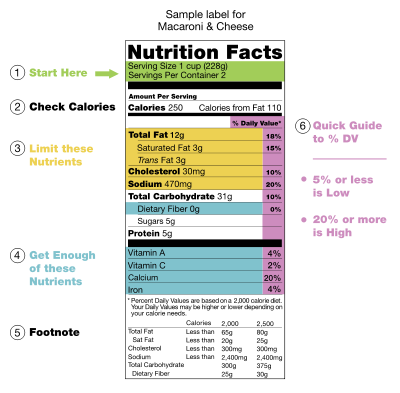In theory, meal prepping sounds like a no-brainer – look at your week ahead and plan accordingly.
And while it all checks out on paper, meal prep planning fails to take into account the unexpected. There are some weeks you are busier then others, some days where you’re traveling and can’t bring food (or you forget!) and other days you have to meet someone for dinner.
Eating out doesn’t mean you’re doomed to settle for an unhealthy option. There are plenty of healthy options in our local community. This next month, Elite will spotlight several local restaurants around Chandler/Tempe so you can always have a fresh meal option in your back pocket! This week we’re looking at how to read a nutrition label so you can make healthy, smart decisions on your own.
Getting enough of the right macronutrients is tough to do for our active lifestyles. But you can help yourself by knowing what to look for on food labels, which tell you about the amount and blend of nutrients in a product. Read on to learn how to decode these fact-filled mysteries.

Serving size: An amount commonly eaten. Label information is based on just one serving. Never assume an entire container is one serving, especially for beverages and snack foods.
Total calories: Amount of energy, measured from the combination of carbohydrates, fat and protein.
% Daily Value: Applies to the general population. Your needs will differ based on your fitness goals and activity level. You can calculate how much you need at mypyramid.gov.
Total fat: Aim for three grams or less per 100 calories, which means that 30 percent or less of the food’s calories come from fat. If you are trying to bulk up or who maintain a heavier weight, you may require 30 to 45 percent of their calories from fat. Watch for saturated and trans fats. They promote inflammation, slow digestion and delay absorption of energy, leaving you feeling slow and heavy.
Protein: Comprises 22 amino acids, eight of which you need to consume through food, because your body cannot produce them. When a label says “complete protein,” that food has all eight. Meat, poultry and fish are foods with complete proteins, as are milk, cheese, yogurt and eggs. Soybeans are the only complete plant protein.
Sodium: A major electrolyte that influences muscle contraction and the movement of fluids and nutrients in and out of cells. Daily requirements depend on your exercise intensity. The general recommendation is for 2,300 milligrams each day, equivalent to a quarter teaspoon of table salt. Foods high in sodium include: soups, prepackaged foods [e.g., pasta and rice mixes], frozen entrees, pizzas and snacks, chips and crackers, processed meats, cheeses, canned tomato products, pickles, ketchup and mustard.
Dietary fiber: A carbohydrate that contributes to feeling full. Soluble fiber, found in apples, oats and barley, becomes gelatinous when wet. Insoluble fiber, found in whole grains, fruits and vegetables, is referred to as “nature’s scrub brush,” because it absorbs water and stimulates your large intestine to move solid materials through to keep you regular. Aim for at least 25 grams daily.
Sugars: The total of naturally occurring sugar and added simple sugars. Dairy foods and fruits contain natural sugars. Added simple sugars include high fructose corn syrup, honey and fructose.
Vitamins/minerals: Calcium and iron are two major nutrients, as they play important roles in the bone-building and oxygen-carrying capacity of blood, respectively. Regarding calcium, everyone should aim to get 1,300mg daily. For iron, males require 11mg a day, while female athletes need 15mg.
Ingredients: Listed in order from most to least by weight; thus, the first few ingredients make up the majority of the food. Top ingredients are: whole or 100-percent grain, a protein source [e.g., milk, whey, soy] and vegetable or fruit. Avoid ingredients that trigger your allergies, hydrogenated or partially hydrogenated oils and added sugars, such as high-fructose corn syrup, fruit juice concentrate, maltose, dextrose, sucrose, maple syrup, brown sugar, lactose, molasses, malt syrup and raw sugar.

